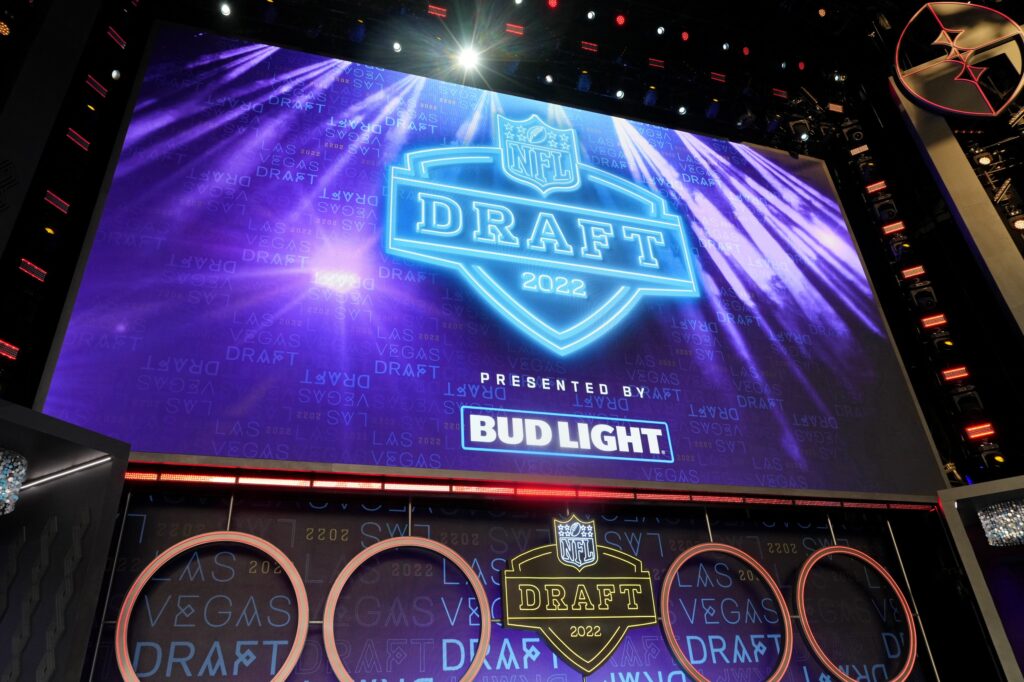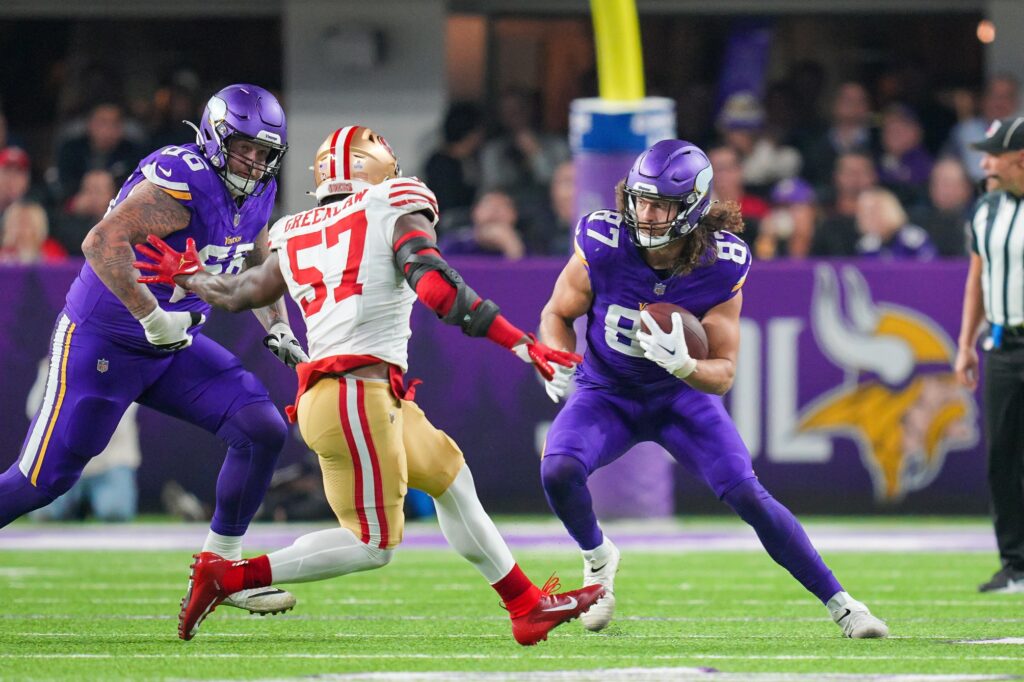EAGAN — The draft value charts disagreeing on whether the Minnesota Vikings made a good trade with the Detroit Lions was almost too perfect.
When the Vikings elected to drop back from the 12th pick to the back of the first round — and in doing so, pass up the chance to take prospects like Jameson Williams and Kyle Hamilton, who were talked about as potential franchise players — they decided that the value was better to move up in the second round and add a third-round pick than it was to take someone at their spot.
The old school Jimmy Johnson chart gave the edge to Detroit, who sent the No. 32, 34 and 66 picks to Minnesota in exchange for No. 12 and 46 overall. The PFF chart gave the Vikings more credit.
“It’s kind of one of those things that you look at what’s expected,” GM Kwesi Adofo-Mensah said. “A lot of it’s what could be there, the pick I’m trading to versus what am I giving up now? You have to take it on faith that your calculations are right, and it came down right to the end. We were comfortable with what we were doing.”
Historically, the Johnson chart has overvalued the top selections. Kind of. In recent years, the 12th overall pick has netted teams linebacker Micah Parsons, quarterback DeShaun Watson and receiver Odell Beckham Jr. If that’s what Jameson Williams becomes, we are going to wonder for a long time why the Vikings didn’t see the value in taking him and tossing him alongside Justin Jefferson and Adam Thielen.
“In hindsight Vikings definitely misread what the trade market was,” OverTheCap.com’s Jason Fitzgerald wrote on Twitter. “They gave up a high pick and by far got the worst haul.”
At the same time, the Vikings are in need of players. They entered the draft with significant needs across the roster. It’s possible that they didn’t feel like they could afford to take a big swing and miss.
History is going to tell us whether the Vikings were brilliant to aim for multiple good prospects over one great prospect. Thursday night’s trade down is going to be the signature move that Kwesi Adofo-Mensah said in the lead up to the draft that he wished to not have pinned on him. With a move like this, that’s going to be the case, especially when it’s in the division.
“It’s something you think about,” Adofo-Mensah said of trading with a division opponent. “Me and Kevin [O’Connell] talked about it. He was one of our favorite players in the draft, but we got a pretty bad dude on our team, and we can add other pieces on the other side.”
Make no mistake, the Vikings did get a good prospect. Their pick Lewis Cine is a 6-foot-2 safety who runs a 4.37 40-yard dash and played a key role on one of the best college defenses in a long time. Now defensive coordinator Ed Donatell (presumably) has two dynamic safeties and a future option when age eventually catches up to Harrison Smith. The move opens up Cam Bynum to be a hybrid or depth, which is good.
Get more Vikings by subscribing to the free Purple Insider Newsletter.
Remember, the defense was horrendous the last two years. Making moves to improve the defense fits along with everyone’s feeling on their biggest needs. But in trading down, the Vikings also passed on Kyle Hamilton. He ended up going to the Ravens a few picks later. The difference in expectations for Cine versus Hamilton can be encapsulated by their PFF comparisons. Cine is the next Adrian Amos, Hamilton is Derwin James. It might not turn out that way, but the league looked at one as a defense-changer and the other as a guy who they were OK missing out on.
“It’s really the same thing as economics, it’s how happy are you in this outcome versus in this outcome versus this outcome?” Adofo-Menah said. “You can talk about charts all you want. It’s not like you call somebody if you were buying a house and saying, hey, it should be worth this. Well, they might not pay that. If something is worth as much as someone is willing to pay for it. We kind of went with this, and going into the process we said, okay, what would our happiness level be if we did this trade versus staying versus this other trade?”
So the first part of Thursday night’s trade down will be judged by whether Williams or Hamilton becomes a superstar or if the Vikings found someone who is much better than his Adrian Amos projection.
The second part will be graded by what happens next.
Will the Vikings shock everyone and take a quarterback that they secretly loved while the rest of the league passed on the likes of Malik Willis, Sam Howell, Matt Corral and Desmond Ridder? But if that was the case, wouldn’t they have taken that guy with the 32nd overall pick to ensure they got the QB’s fifth-year option?
If it’s not a quarterback, why was it so important to move up from No. 46 to No. 34 that they needed to forego Williams or Hamilton?
If there’s a receiver they want but that player isn’t expected to be there at 46 — say Skyy Moore or George Pickens — then the whole plan would start to make sense. Maybe they didn’t see that big of a gap between Williams and Moore or Pickens and figured they could pick up an extra pick along the way.
The same could be said for edge rusher. After the top guys Trevon Walker, Aidan Hutchinson and Kayon Thibodeaux went off the board, the drop off was significant, possibly leaving the Vikings to believe they could get their guy early in the second. Maybe someone like USC’s Drake Jackson?
Cornerback qualifies here too. If the Vikings didn’t want to spend the 12th pick on Trent McDuffie or Kaiir Elam and felt an equal prospect could be taken at 34, then it might be fair to move down and grab Cine and the corner they liked all along.
Ideally it will all come into vision on Friday because Thursday left fans with a lot of bewilderment. Trading down a few spots in 2021 felt quite different than nearly running right out of the first round on a team that needs future talent badly. Their stars are old outside of Justin Jefferson. Was it really wise to back out of a potential star for the next generation? Maybe after Friday night we will say it was the right thing to do.
Until then, they get a TBD for the night. And they leave themselves with a trade to follow for a long, long time.









